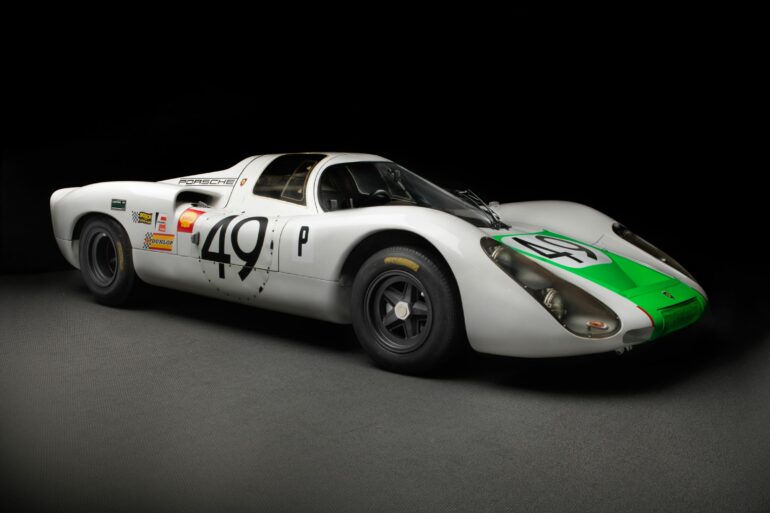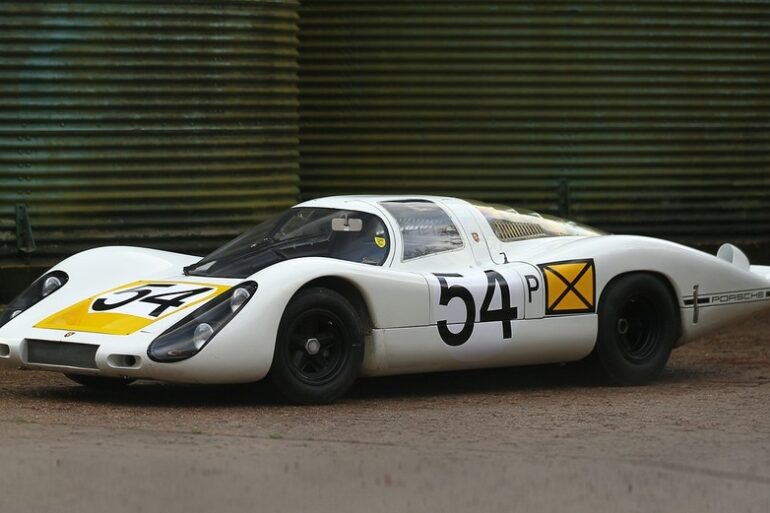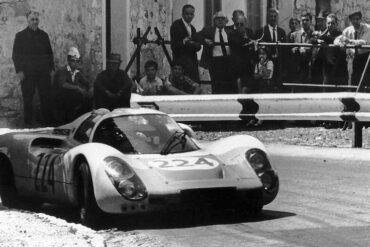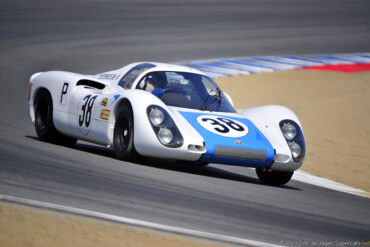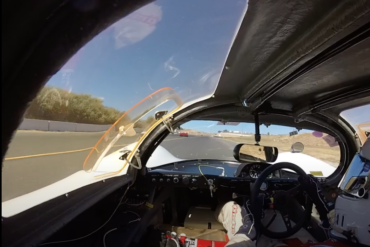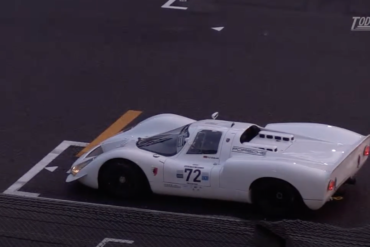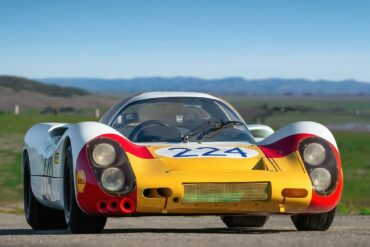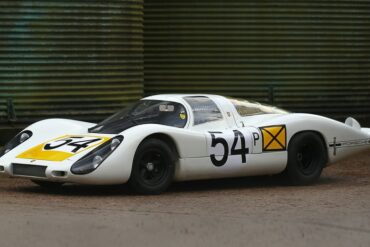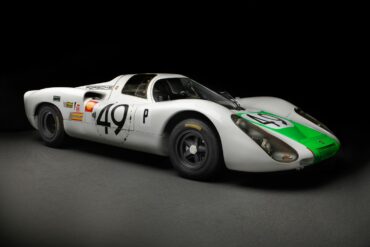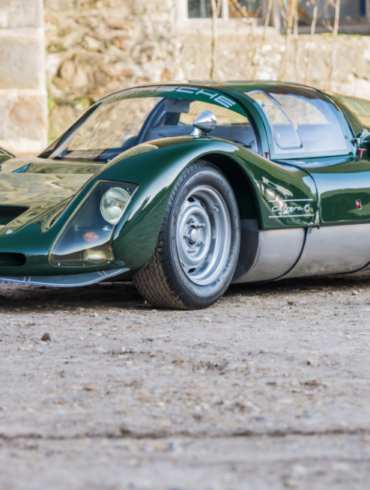The K in 907K stands for short-tail ("Kurz" in German). Porsche brought four new 907s with short-tail bodies to the rugged Sebring circuit in March 1968. Seven laps in, one 907 was out, and a second suffered engine troubles after 46 circuits. Not to worry, as the other two dominated the race. Porsche 907 024 with drivers Hans Herrmann (Germany) and Jo Siffert (Switzerland) went from the pole position to a dominating victory at an average speed of 102.512 mph, 10 laps ahead of its sister 907.
Porsche 907
The Ultimate Model Guide
The Porsche 907 was a prototype racer during 1967 and 1968 and it was the first Porsche car to win the Daytona 24 Hours. It was revolutionary design, with long tail body designed to be slippery and low-drag for long endurance races. It also had innovations like the position of the driver seat, which was moved to the right side in order to be an advantage on the clockwise run circuits. While the design was revolutionary, the chassis was similar to the Porsche 910 with a traditional steel tubular monocoque and conventional suspension. Initially designed for a flat-eight engine, the flat six was more reliable. Even with the less powerful engine, the Porsche 907 was able to reach the speed over 300 km/h at Mulsanne Straight. The new car was presented in the 1967 Le Mans 24h test. The engineers weren’t happy after Porsche 907 was unstable at speed, the rear wing had to be modified and there were many more small things that had to be developed. Porsche fielded two cars in the race. The first car retired after six hours due to an engine failure while the second car finished 5th, behind two Fords and two Ferraris. The Porsche 907 raced just once more in 1967 and finished 4th at Brands Hatch 6 Hours.
The regulations changed in 1968 and Porsche had an advantage to Ford and Ferrari who previously used big and more powerful V8 and V12 engines. Italian manufacturer wasn’t able to prepare the car under new regulations and sat out the whole campaign. Porsche’s appetite grew and was resolute to win World Sportscar Championship and to triumph at Le Mans. Porsche fielded no less than four Porsche 907L cars at Daytona 24 Hours. Equipped with the new flat engines and with a couple of small changes in design, modified 907 was lighter and ready to conquer tracks worldwide. At Daytona, one of the cars crashed while was leading the race, while the other three impressed with 1-2-3 finish what was Porsche’s first victory at Daytona and also maiden win in any 24-hour race. Drivers of the winning car were Vic Elford, Jochen Neerspach, Rolf Stommelen, Jo Siffert, and Hans Herrmann.
The next success was a victory at Sebring 12 Hours, with Siffert and Herrmann sharing the seat of Porsche 907, while later in the year Vic Elford and Umberto Maglioli triumphed in notorious Targa Florio race. That was the last big win for Porsche 907 as it was replaced with a new 3-liter Porsche 908. However, 907 continued its life for a while. After Porsche factory team began to race with 908s, remaining 907s were used by private teams.
Porsche 907 Basics
Manufacturer: Porsche / Production Years: 1966-1967 / Production: ~ 12 units / Body style: 2-door coupe / Layout: Rear mid-engine, rear-wheel-drive layout / Engines: 2.0-litre flat-6 or 2.2-litre flat-8 / Predecessor: Porsche 910 / Successor: Porsche 908 / Accomplishments: 1968 Daytona 24h winner & 1968 Targa Florio winner
Join Our Porsche Community
Sign up for our weekly Porsche newsletter. The latest Porsche news, rumors, reviews and more delivered to your inbox. Cool Porsche stuff perfect for the flat-six obsessed.


